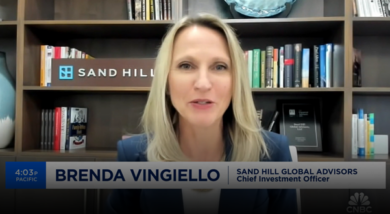“Everyone has a plan until they get punched in the face.” – Mike Tyson
If the markets were a boxing match, then last quarter’s pummeling would have been met with calls for the referee to intervene. Volatile commodity prices, a potential Greek default, uncertainty around tighter U.S. monetary policy, pharmaceutical and biotechnology pricing worries, geopolitical concerns, an auto manufacturer lying about emission standards, and most prominently, and elevated concerns around the health of China’s economy, have all made this year an exhausting fight for long-term investors.
While conditions can always deteriorate further, and unequivocally bad news is always bad news, the markets have proven remarkably resilient in the face of these mounting concerns. We suspect the reason for this resiliency is that the markets are sensing something far more mundane than these visceral headlines of the moment – that while there might not be a lot to celebrate in the economic picture lately, things are not as bad as they seem.
At the heart of all the uncertainty last quarter was China’s slowing growth rate. Given that country’s general lack of economic transparency – as well as its rapidly evolving economy – the headlines painted a cloudy picture. In fact, the world’s second largest economy has been slowing for years, but investors started to pay more attention to this transition after last year’s fall-off in commodity prices and this year’s mainland Chinese stock market swoon. As a reminder, the Chinese government has been orchestrating a significant rebalancing of their economy for quite some time, away from an economy largely dependent on building roads and bridges to one driven by consumers. The result has been slowing infrastructure spending and slowing aggregate growth.
Our own view is that the market is emphasizing the wrong metrics and instead should be focusing on the strength of the Chinese consumer, given that the majority of incremental economic growth is now being driven by the services side of its economy. Specifically, we are encouraged by the recent results on retail sales and personal income, as well as the stabilization in property prices and improved forward-looking survey data. While Chinese growth uncertainty will not fade away anytime soon, the country remains a powerful economic force and a positive driver of global expansion – and possibly the greatest long-term consumption story the world has ever known.
Meanwhile, the developed economies continue to grow at a positive, modest pace. The U.S. job market continues to improve, corporate earnings (outside of the energy and material sectors) remain healthy, and market valuations are reasonable. Furthermore, our developed economic peers in Europe and Japan are actually experiencing accelerating growth, albeit from a low base. This has helped to contribute to an overall global growth rate hovering around 3% this year, close to its long-term average.
Despite these economic realities, there is an ongoing view shared by many that a global recession will unfold in the year ahead. Of course, the recent market pullback fanned these emotional flames, as well as the uncertainty around the prospect of the first Federal Reserve interest rate hike in nearly a decade and a modest slowing of the economy. But how reasonable is this line of thinking? While the future is always unknown, we see this dire probability as highly unlikely for the following reasons:
First, this would be the first bull market in history to end without a single Federal Reserve interest rate tightening. Historically, the Federal Reserve begins raising interest rates in the middle of an economic cycle, when economic growth is solid, corporate earnings are expanding, and the flicker of inflation expectations is just starting to appear. Over the eight interest rate cycles since the mid-1950s, the market has continued to trend positively for the better part of three years after the first rate hike. This time around, given the unprecedented low starting point on rates, and the likely slow path of subsequent rate hikes, we suspect the cycle could extend further than this historical experience suggests.
Second, it’s worth stating that markets typically experience a 10% correction about once a year and that those corrections are normal and healthy for a rising market. It is also true that more significant corrections and new bear markets don’t just materialize out of thin air. They occur because investors anticipate the onset of a recession. While that fear contributed to the emotional response we saw in the third quarter, as we highlight above, the economic storyline is not supportive of that outcome.
Third, the stock market is reasonably valued, right down the middle of the fairway from a historical price to earnings ratio perspective. And of course, relative to the bond market, stocks remain the most attractive house in the financial asset neighborhood. While that is little comfort during a down period, if investors want to generate portfolio returns greater than the current rate of inflation over time, then they need to own some growth assets and hold a balanced allocation to stocks in their portfolio.
Yet the sense more recently has been that perhaps the markets have taken one too many punches this year and as a result, might not want to get back up off the proverbial mat. That perception is exactly how it feels every time the markets correct and portfolios react accordingly. Sticking to your financial plan, particularly when you feel like you’ve taken a punch to the face, is how you proactively manage that feeling and achieve your financial goals over time.
As in many facets in life, there is a tendency among investors to ignore risks for long periods of time only to suddenly focus on them as if nothing else matters. Rounds like this last one remind us to get up, dust ourselves off, and take advantage of the emotional noise of the crowd in the moment. Our approach is to take advantage of times of market distress like the one we just passed through, and maintain a balanced view and commitment when others typically succumb to the repeated headline blows to the head.
After all, investing for the long-term isn’t truly a boxing match. Stocks are not a zero sum game where somebody wins and somebody loses. Rather they represent long-term investments in the worldwide growth of demand, as well as a play on innovation and productivity and the advantage of size and scale, magnified by the power of compounding those returns over time. While the world, as always, isn’t perfect, in our opinion, it is not apt to suffer a major economic downturn any time soon – and as a result, we think this cycle has plenty of fight left in it.
Articles and Commentary
Information provided in written articles are for informational purposes only and should not be considered investment advice. There is a risk of loss from investments in securities, including the risk of loss of principal. The information contained herein reflects Sand Hill Global Advisors' (“SHGA”) views as of the date of publication. Such views are subject to change at any time without notice due to changes in market or economic conditions and may not necessarily come to pass. SHGA does not provide tax or legal advice. To the extent that any material herein concerns tax or legal matters, such information is not intended to be solely relied upon nor used for the purpose of making tax and/or legal decisions without first seeking independent advice from a tax and/or legal professional. SHGA has obtained the information provided herein from various third party sources believed to be reliable but such information is not guaranteed. Certain links in this site connect to other websites maintained by third parties over whom SHGA has no control. SHGA makes no representations as to the accuracy or any other aspect of information contained in other Web Sites. Any forward looking statements or forecasts are based on assumptions and actual results are expected to vary from any such statements or forecasts. No reliance should be placed on any such statements or forecasts when making any investment decision. SHGA is not responsible for the consequences of any decisions or actions taken as a result of information provided in this presentation and does not warrant or guarantee the accuracy or completeness of this information. No part of this material may be (i) copied, photocopied, or duplicated in any form, by any means, or (ii) redistributed without the prior written consent of SHGA.
Video Presentations
All video presentations discuss certain investment products and/or securities and are being provided for informational purposes only, and should not be considered, and is not, investment, financial planning, tax or legal advice; nor is it a recommendation to buy or sell any securities. Investing in securities involves varying degrees of risk, and there can be no assurance that any specific investment will be profitable or suitable for a particular client’s financial situation or risk tolerance. Past performance is not a guarantee of future returns. Individual performance results will vary. The opinions expressed in the video reflect Sand Hill Global Advisor’s (“SHGA”) or Brenda Vingiello’s (as applicable) views as of the date of the video. Such views are subject to change at any point without notice. Any comments, opinions, or recommendations made by any host or other guest not affiliated with SHGA in this video do not necessarily reflect the views of SHGA, and non-SHGA persons appearing in this video do not fall under the supervisory purview of SHGA. You should not treat any opinion expressed by SHGA or Ms. Vingiello as a specific inducement to make a particular investment or follow a particular strategy, but only as an expression of general opinion. Nothing presented herein is or is intended to constitute investment advice, and no investment decision should be made based solely on any information provided on this video. There is a risk of loss from an investment in securities, including the risk of loss of principal. Neither SHGA nor Ms. Vingiello guarantees any specific outcome or profit. Any forward-looking statements or forecasts contained in the video are based on assumptions and actual results may vary from any such statements or forecasts. SHGA or one of its employees may have a position in the securities discussed and may purchase or sell such securities from time to time. Some of the information in this video has been obtained from third party sources. While SHGA believes such third-party information is reliable, SHGA does not guarantee its accuracy, timeliness or completeness. SHGA encourages you to consult with a professional financial advisor prior to making any investment decision.










